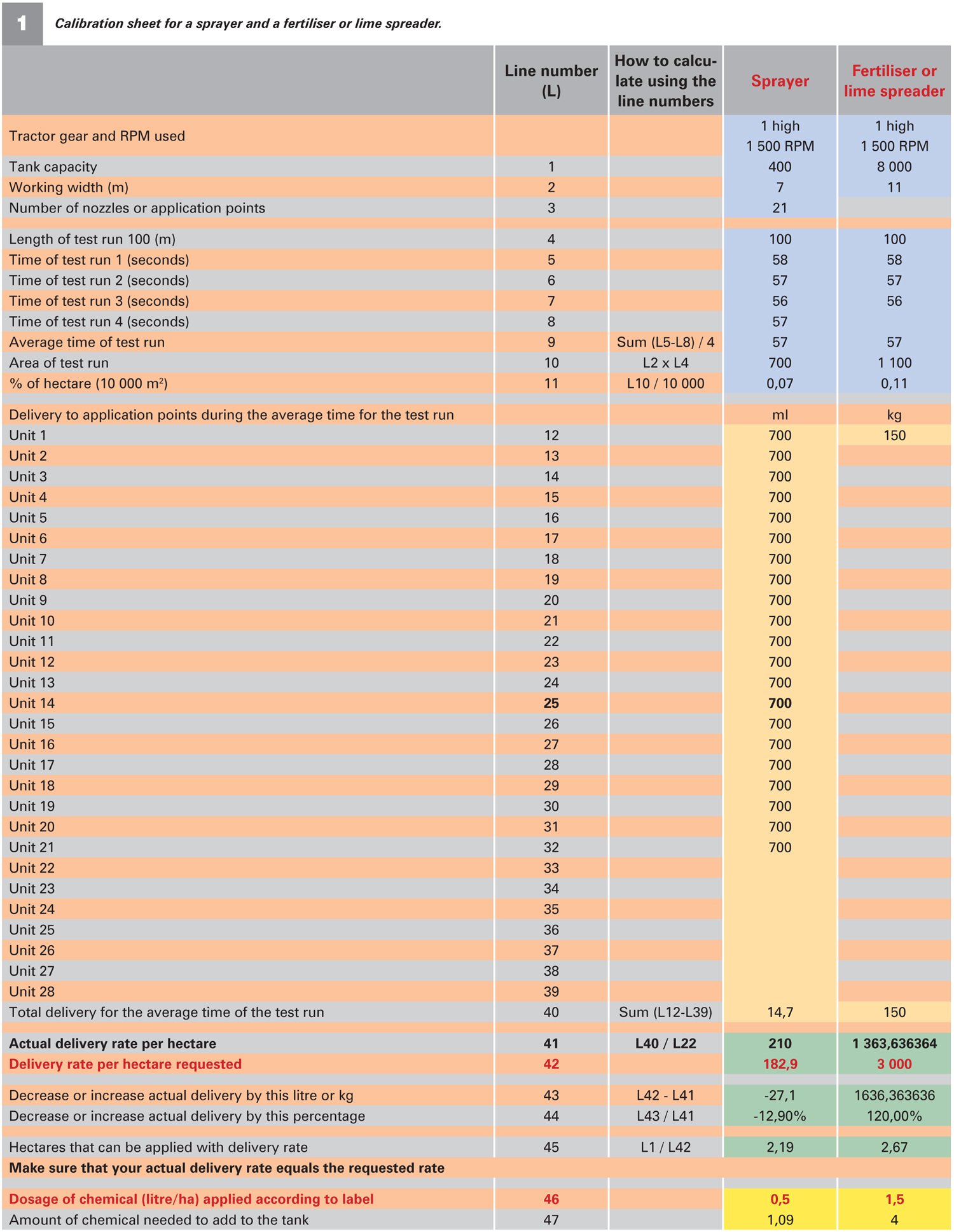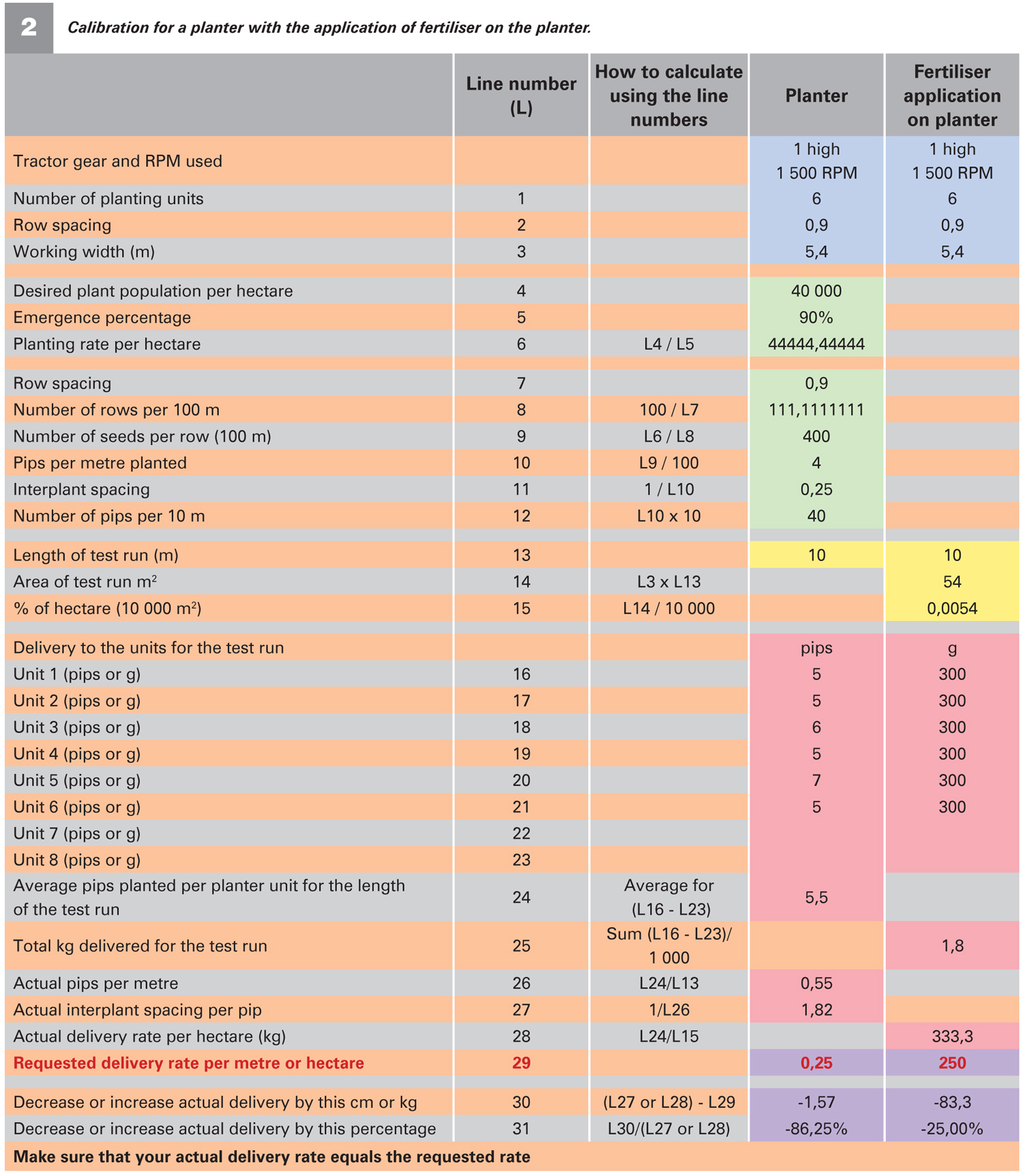August 2025
| PIETMAN BOTHA, INDEPENDENT AGRI- CULTURAL CONSULTANT |
 |
FARMING IS ALL ABOUT DOING THE RIGHT ACTION CORRECTLY. THIS WILL INCREASE YOUR YIELD AND PROFITS. THE CALIBRATION OF EQUIPMENT CAN SIGNIFICANTLY IMPACT PROFITABILITY BY IMPROVING EFFICIENCY, REDUCING WASTE, ENSURING QUALITY AND PREVENTING COSTLY ERRORS.
The mistake of not calibrating the planter and sprayer can drastically influence the final yield. A plant population that is too high or too low will cost you money, so it is best to plant adequate seeds to ensure that the final plant stand is optimum for the desired yield. Unfortunately, a fertiliser mistake will also cost you a lot of money. It doesn’t matter if you apply too little or too much fertiliser – your profit is harmed.
HOW TO CALIBRATE
Table 1 and show examples of calibration sheets. Use a sheet like this, apply your own data to the coloured blocks and do your own calculations.

Example: Table 1
In Table 1, the example of a 400-litre sprayer, spraying 7 m wide with a 21-nozzle sprayer and an 8-ton fertiliser or lime spreader, spreading 11 m wide, is demonstrated.
In the first section (in blue), you must determine the size of the area over which the product is applied, secondly (with the brown) how much is used and thirdly (with the green) how much is used per hectare, and then how to change the application rate to meet the required application rate. In the last portion (with the yellow), determine how much chemicals must be added to the sprayer.
Example: Table 2
In Table 2 an example of a maize planter with six rows applying fertiliser at planting is demonstrated.
In the first part (in blue) you can apply general information. In the second part (green) the number of pips per metre needed is calculated. The third part (pink) shows how much is applied per hectare or per metre, and then how to change the application rate to meet the required application rate.
Let’s take planting maize seed as an example. Suppose the desired maize stand is 40 000 plants per hectare. Assuming the number of surviving, healthy plants will be approximately 90%, the planting rate (PR) can be calculated by the following equation:
PR = plants per hectare desired/emergence percentage
PR = 40 000/0,90
PR = 44 444 seed/hectare
Seed per metre of row required for planting: Convert the planting rate to reflect the row spacing in use. In this example, a 90 cm row spacing is used for the calculations. One hectare is 100 m wide x 100 m long, or 10 000 m².

To calculate the distance between the seeds:
With this known, the planter can be taken to the field to measure the plant density
CONCLUSION
By using these calibration sheets, farmers can ensure the right action is taken correctly. Remember, a mistake during planting cannot be corrected without replanting, so make sure everything is working correctly. Compare the number of bags of seed planted against the bags needed for the field on a regular basis. Also, check the planting distance regularly.
Publication: August 2025
Section: Pula/Imvula